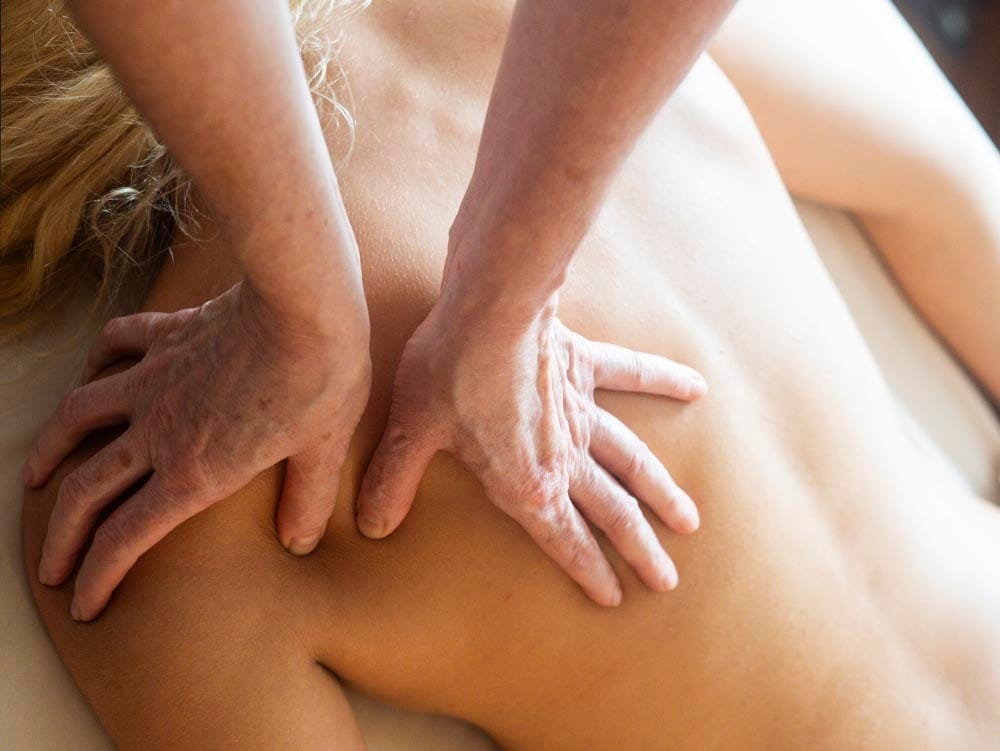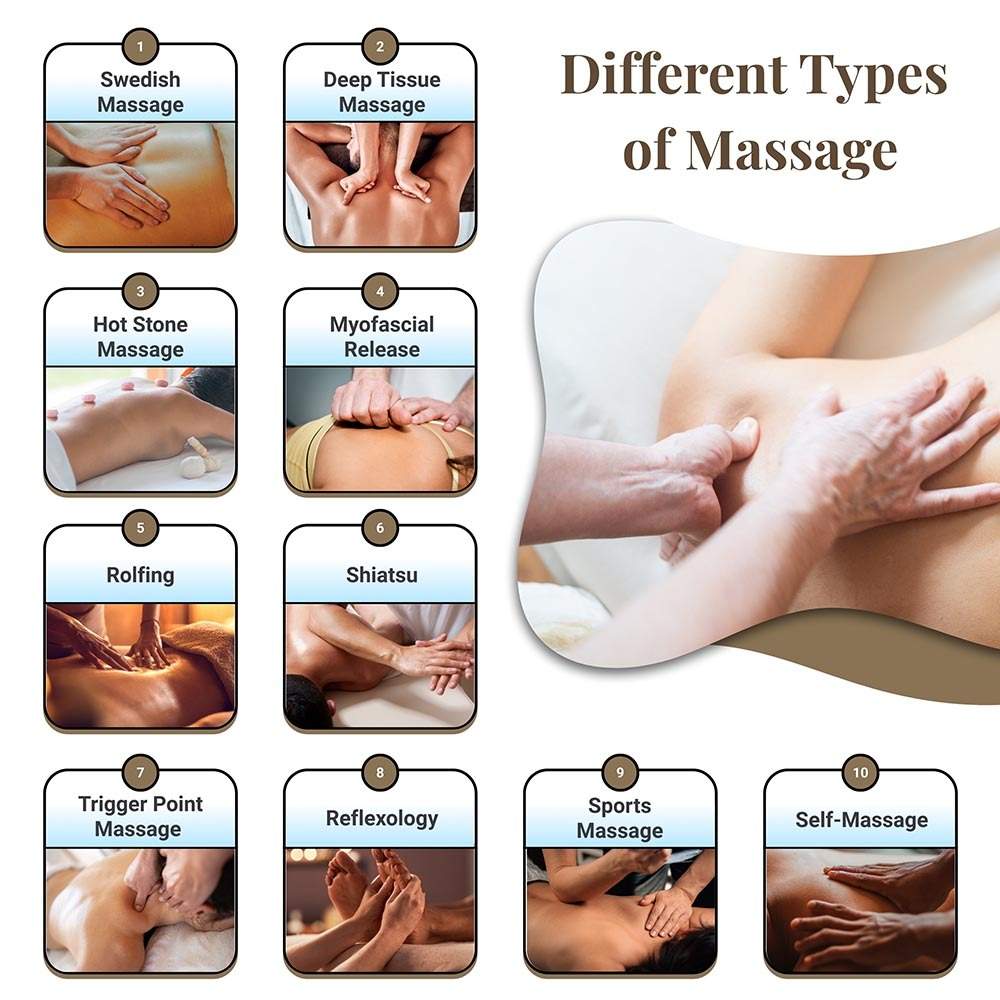Table of contents
Massage helps you feel better mentally, physically, and emotionally. If you are looking forward to a relaxing and soothing massage session, the right type of massage can make a big difference in the overall experience. The expert massage therapists at ila Only Spa in New York City take you closer to better health, balance, and self-care with their personalized healing touch. They understand that every individual has unique needs and craft each treatment to address your specific concerns, helping you enjoy the calm, vitality, and well-being you seek.
 Massage is one of the oldest healing practices used by various cultures to support overall health. It is an umbrella term that covers many different techniques and healing philosophies that focus on relaxing, restoring, and rebalancing mind, body, and spirit.
Massage is one of the oldest healing practices used by various cultures to support overall health. It is an umbrella term that covers many different techniques and healing philosophies that focus on relaxing, restoring, and rebalancing mind, body, and spirit.
Some approaches work better for relaxation, while others can help work out muscle tension or manage chronic pain, depending on what you seek.
Read on to learn more about types of massage, how its techniques focus on different parts of the body or treatment methods, and if they can benefit your overall health and long-term well-being.
What Is Massage Therapy?
Massage therapy is a hands-on treatment that uses various degrees of pressure and techniques to manipulate the body’s muscles, tendons, ligaments, and soft tissues to promote relaxation, relieve tension, and enhance physical and emotional wellness. It is an effective, low-risk way to relieve stress and pain.
Depending on the technique being used, a massage can:
- Reduce muscle pain and stiffness
- Improve circulation of blood and lymphatic flow
- Decrease stress and anxiety
- Support better sleep and rest
- Enhance the body’s immune function
- Help in recovering from injury or physical strain
Massage therapy is performed by licensed, trained therapists and is often used as a treatment for multiple medical conditions.
Different Types of Massage
There are many different types of massage, and each offers unique benefits tailored to your specific needs. There is no single best massage; you will choose based on your personal experience and the results you seek. The right massage for you is the one that meets your individual needs and leaves you feeling better, inside and out.

Knowing about the types of massage can play a significant role in addressing your individual concerns, whether it is relieving pain, reducing stress, or simply promoting deep relaxation.
Before Getting a Massage
If you have arthritis or any other health conditions, consult your doctor to determine if massage therapy is suitable for you. Also, inform your therapist beforehand about your health and medical condition, and point out the affected joints to get the best out of your session.
Swedish Massage
It is the most common type of massage and the best choice for people new to this therapy, who want to release tension and seek a gentle, soothing touch that heals effectively. Swedish massage involves long, fluid strokes, kneading, deep circular motions, and vibration or tapping that reduce soreness and stiffness in the muscles and joints to improve circulation and break up knots.
Therapists may adjust pressure according to your desired level and use oil or lotion for easy movement of hands on the skin. A Swedish massage will last 60 to 90 minutes.
Related article: What To Know About Swedish Massage
Deep Tissue Massage
This type of massage uses more pressure than a Swedish massage and focuses on the manipulation of both the top and deepest layers of muscles and connective tissues. It is the right option if you suffer from muscle problems such as soreness, injury, imbalance, tightness, and chronic muscle pain.
The therapist uses slow strokes with intense and focused finger pressure to relieve tension deep inside the muscles. While deep tissue massage may be more intense, it should not cause any pain or soreness. This massage lasts 60 to 90 minutes.
Hot Stone Massage
A hot stone massage involves placing smooth, heated stones on specific parts of the body as you lie on your stomach. This massage is similar to Swedish massage, as your therapist may also use a stone to massage different parts of the body using Swedish massage techniques with gentle pressure. The hot stones send soothing heat to the muscles and tissues, releasing tension and inducing feelings of relaxation.
A hot stone massage can ease muscle tension, improve blood flow, and relieve pain and stress effectively. It works best for people who seek deeper relaxation without too much bodywork. At times, therapists also use both hot and cold stones for contrast or for different healing purposes. This massage is 90 minutes long.
Related article: What is Hot Stone Massage Therapy and Why You Should Get It?
Myofascial Release
Myofascial release is a type of massage that helps relieve pain by manipulating the fascia, connective tissues that surround muscles, blood vessels, and nerves. Your therapist will stretch and release the tensed connective tissues by gently rolling the skin back and forth with light pressure on the back, legs, and other areas of the body.
Headaches, venous insufficiency, and myofascial pain syndrome are some of the specific conditions that benefit from myofascial therapy. The massage takes 60 minutes or longer.
Rolfing
It is a form of deep tissue massage, similar to myofascial release, known as structural integration. It focuses on realigning and balancing the body by manipulating the connective tissue or fascia to improve pain, posture, movement, range of motion, and overall body function.
Rolfing is usually done over a series of sessions. Compared to a typical massage, Rolfing works more methodically through the body’s structure. It may be intense, but it is deeply restorative and relaxing.
Shiatsu
It is a Japanese massage technique that focuses on restoring the flow of qi or healthy energy in the body. It works best for people who want to feel relaxed and relieve stress, pain, and tension. It also improves sleep and fatigue, promotes emotional and physical wellness, which leads to a better mood.
During the massage, your therapist will use their hands, palms, and thumbs to massage certain points of the body. Pulsing or rhythmic pressure is used to achieve desired outcomes. This massage lasts 60 to 90 minutes.
Trigger Point Massage
Trigger point massage works best for people with injuries, chronic pain in various parts of the body, or a specific condition. The therapist focuses on areas of tightness in the muscle tissues known as trigger points and applies pressure or vibration to reduce pain. Trigger point massage uses alternating levels of pressure in the pinpointed areas to relieve tension.
The massage will cover your entire body, but the therapist will pay special attention to the knots and areas of tension to provide relief and restore muscle balance.
Reflexology
Reflexology stimulates the release of endorphins, the feel-good brain chemicals, reduces pain and the negative effects of stress. It uses gentle to firm pressure on different pressure points on the hands, feet, and ears to help you relax and restore your natural energy. Stimulating these points can release tension and increase circulation to the connected organs or area of the body.
It is a good option for people who don’t want their entire body massaged, as it only targets specific areas.
Sports Massage
This type of massage is popular among athletes and people who exercise frequently and suffer from repetitive muscle injuries. It is specifically designed to prevent and treat sports injuries and can be used as a full-body massage or on specific parts of the body.
Sports massage can help increase flexibility, improve athletic performance, relieve pain, reduce anxiety, and release muscle tension, which can also prevent delayed onset muscle soreness (DOMS). The techniques used by therapists can vary according to the muscles affected by the sport and the place of injury.
Self-Massage
If you don’t have the time or budget for a professional massage, self-massage helps you get immediate relief. Self-massage is a great way to target painful areas when and where you need it most.
You can knead your own sore joints, pressure points, or muscles with your hands, knuckles, elbows, or special massage tools. If you don’t have massage tools, you can use everyday items like tennis balls or rolling pins to ease your discomfort. Applying oil or lotion to the skin can make sliding or gliding strokes easy. You can also apply heat prior to self-massage to relax the muscles as you work them.
It is important to note that even if you go for professional massage therapy, self-massage between sessions can extend the benefits of your massage.
Each type of massage therapy offers unique benefits, depending on your needs. Choosing the right massage therapy and techniques helps you move closer to your wellness goals. It can also be used as a complementary therapy for people with various health conditions.
How to Find the Best Massage Therapist?
Finding the best massage therapist can make a big difference in the quality and effectiveness of your treatment.
Here are some tips on finding the right therapist who can make it a worthwhile experience for you:
- Determine what you are looking to achieve, whether it is chronic pain relaxation, or stress-reduction. It will help you choose a therapist with the right expertise.
- Ask your doctor, friends, or family members for referrals. Personal recommendations can help you find trustworthy practitioners.
- Check online reviews, ratings, and read testimonials to look for consistent feedback on the therapist’s professionalism and overall client experience.
- Find out therapists’ credentials to ensure they are licensed or certified in your region. It is essential to work with a qualified therapist who has completed formal training and can deliver safe, desired outcomes.
- You can also book a few massages with different therapists to see which one offers the best service.
- Visit the spa or clinic, talk to the staff, and you will be able to determine if this is a good place for you.
- Different therapists specialize in different techniques. Choose the one who offers the type of massage that addresses your body’s needs.
Communicate your expectations to your therapist, ask relevant questions, and share your concerns. Let them know what makes you comfortable so they can make it a safe, relaxing experience for you. Sometimes, you have to try a few types before you find the one you enjoy the most.
Important Things to Consider before Getting a Massage
Massage therapy is safe for most people, but there are certain conditions when it may not be appropriate.
Massage has been associated with some complications, including:
- Bone fracture
- Blood clot
- Nerve injury
Avoid or delay a massage if you have any of the following:
- Fever
- Severe sunburn
- Open wounds
- Severe bruising
- Dizziness
- Nausea
- Acute injury
- Medical condition
Talk to your doctor before a massage to prevent side effects. Also, tell your massage therapist about your health conditions, medical history, any medications you are taking, and your therapeutic goals to ensure your massage session is safe and beneficial.
With so many options to choose from, selecting the right type of massage therapy can be tough. Identifying your specific needs can help you narrow down choices and find the best techniques and therapists for the desired outcomes. At ila Only Spa, we offer all types of massage therapies in a calm, luxurious environment that is carefully designed to promote healing, comfort, and deep relaxation. Our expert therapists guide you towards the best experience for your mind, body, and lifestyle.
